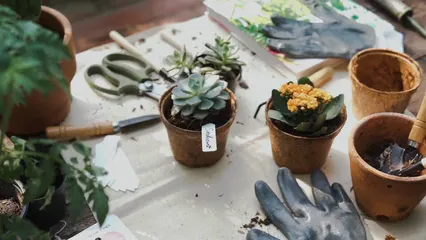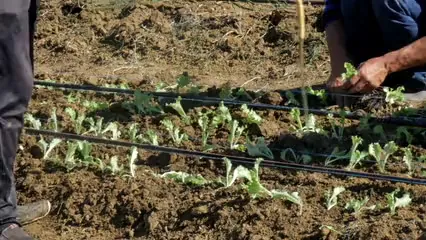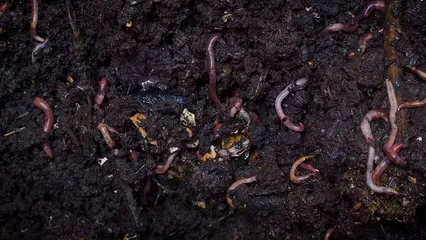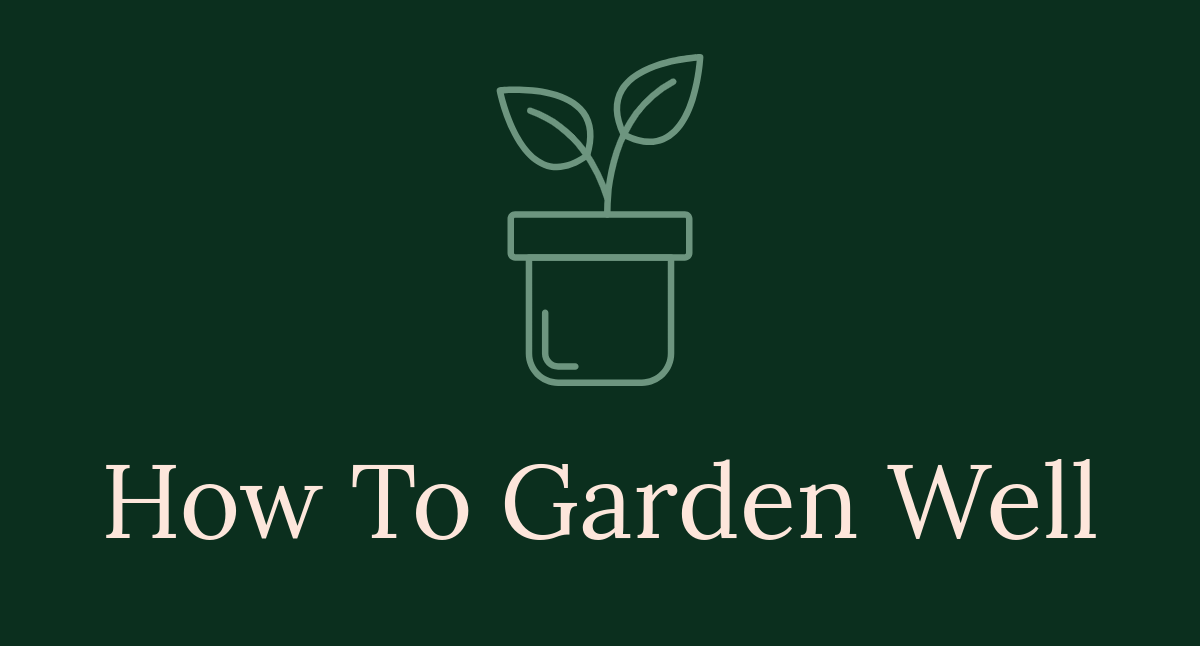

How to Save Money While Building Raised Garden Beds for Spring Planting
Introduction
Ah, raised garden beds! The ultimate gardening hack that turns your backyard into a botanical paradise. These elevated plots not only beautify your space but also create perfect conditions for your plants. Enhanced drainage, improved soil quality, and easier access for weeding and harvesting are just the icing on the cake. However, as we all know, gardening can sometimes feel like it’s draining our wallets faster than the water we pour on our plants. With prices rising like a weed in spring, building your own raised beds becomes a savvy solution to save some green while still playing in the dirt.
Now, picture this: you’re out there, hammer in hand, constructing your raised garden beds. As you sweat a little, you realize you’re not just crafting a stylish haven for your veggies; you’re also keeping those pesky costs in check. Thrilling, right? It’s like being a superhero in a flannel shirt, fighting inflation one nail at a time. Plus, who doesn’t love the feeling of satisfaction from creating something with their own two hands?
In this article, we’ll share practical tips and clever methods to save money while building your raised garden beds. From sourcing materials on a budget to innovative techniques like Hugelkultur, we’ll cover it all. So, roll up those sleeves and get ready to dig into some money-saving wisdom that will have your garden flourishing without breaking the bank!

Summary Section
Ready to save some cash while growing your garden? This article is packed with strategies to make building raised garden beds an affordable adventure. We’ll go over the benefits of raised beds, including better soil quality and easier maintenance. You’ll discover how to source materials affordably, whether you’re raiding your garage or hitting up local swaps.
We’ll also introduce you to the Hugelkultur technique, a fantastic way to fill your beds while keeping costs low. Planning and budgeting are crucial, and we’ll share DIY strategies that make the building process a breeze.
Stick around for detailed guides and tips that will have you saving money and growing delicious veggies in no time!

Planning and Budgeting for Your Raised Garden Beds
Building raised garden beds can be a rewarding experience, but it’s essential to plan and budget wisely. Let’s break down how to do this without sending your wallet into a panic!
Assess Your Space
First things first: measure your available space. Grab a tape measure and find out how much room you have for your raised beds. Keep in mind that a standard size for a raised bed is about 4 feet wide and 6-8 feet long. This width allows you to comfortably reach the middle while avoiding the dreaded “I can’t reach that carrot!” moment.
Consider how many beds you want. Think about what you plan to grow. Vegetables like tomatoes and cucumbers need more space than herbs. Plan for your plants’ needs, and don’t forget to leave room for walking paths. After all, you don’t want to perform Olympic-level gymnastics just to harvest your veggies!
Materials Cost Comparison
Now, let’s talk about materials. You generally have a few choices: cedar, untreated lumber, or pressure-treated wood. Cedar is often the darling of raised bed materials, thanks to its rot resistance. However, it can cost more—around $3.28 per board. On the other hand, untreated lumber is budget-friendly but may not last as long.
For example, an 8-foot by 4-foot raised bed made from cedar can run you about $35. Meanwhile, untreated lumber may cost around $25. You’ll want to weigh longevity against cost. Remember, though, pressure-treated wood is a no-go for organic gardeners. Those chemicals can leach into your soil, and that’s not the kind of “flavor” we’re aiming for!
Speaking of materials, if you want to build a solid foundation for your raised beds, consider getting a Raised Garden Bed Kit. It’s an easy way to get started without having to measure and cut wood yourself. Plus, it comes with everything you need to create a perfect growing environment!

Sourcing Affordable Materials
So, where do you find these materials on a budget? Look no further than local lumber yards, where you might snag good deals. Don’t forget about reclaimed wood! Check local classifieds or community groups. Sometimes folks give away old pallets that are perfect for building!
Consider community swaps or even a neighborhood tool library. Yes, tool libraries exist! You can borrow tools, saving you from buying that expensive drill you’ll only use once.
You can also check out construction sites. Many builders discard usable wood, and with a friendly approach, you might just find a treasure trove. Just remember to ask first—no one likes a sneaky scavenger!
And while you’re at it, make sure to grab some Gardening Gloves to protect your hands while you dig through that reclaimed wood. Trust me, your fingers will thank you!
By assessing your space, comparing material costs, and hunting for affordable sources, you can build your raised garden beds without breaking the bank. Next, we’ll cover how to build these beds on a budget. So, roll up those sleeves and let’s get to it!

Filling Your Raised Garden Bed Cost-Effectively
Building raised garden beds is only half the fun; filling them can be the real wallet drainer. But fear not! There’s a treasure trove of methods to fill your beds without emptying your bank account. Let’s dig into some cost-effective techniques.
Using the Hugelkultur Method
The Hugelkultur method is like giving your raised garden beds a hearty, eco-friendly hug! This German technique involves layering organic materials, such as sticks and leaves, at the bottom of your bed before adding soil. Why is this beneficial? Well, as the organic matter decomposes, it creates nutrient-rich compost while also holding moisture like a sponge.
Imagine this: instead of spending a fortune on bags of soil, you’re using free materials just lying around your yard. Old branches from your last bonfire? Perfect! Leaves from the autumn clean-up? Yes, please! This method not only reduces soil costs but also enriches your garden. It’s like throwing a party for your plants, and everyone’s invited!

Layering Organic Materials
Now, let’s talk about layering organic materials. Think of it as a lasagna for your garden. Start with a base of coarse materials like twigs or straw, then add layers of grass clippings, kitchen scraps, or leaves. Each layer breaks down over time, enriching the soil as it does.
When you layer your organic waste, you create a buffet of nutrients for your plants. Plus, you’re recycling materials that would otherwise end up in a landfill. It’s a win-win! Just remember to balance your greens (nitrogen-rich materials) and browns (carbon-rich materials) for optimal results. Your plants will thrive, and your wallet will thank you.
Bulk Soil Purchase
Finally, let’s tackle the idea of buying soil in bulk. If you’ve ever tried to fill a raised bed with store-bought bags of soil, you know the struggle is real—and expensive. Instead, check out local soil or gravel yards. These places sell soil by the cubic yard, which is much cheaper than those tiny bags.
For instance, a cubic yard of garden soil can cost as little as $30, while a single bag might set you back $5 or more. That’s a massive difference! If you can, team up with a neighbor and split the delivery fee. It’s like having a gardening buddy who helps you save money.
Before you rush out to buy soil, consider your needs. Calculate how much soil you’ll need based on the size of your raised beds. This way, you won’t end up with more than you bargained for. Remember, bulk soil is great, but you’ll need a truck or a trailer to transport it. If you don’t have one, many local suppliers offer delivery services that can save you a headache.
And if you’re looking to enhance your soil even further, consider using a Organic Fertilizer to give your plants the nutrients they crave. A little boost can make a world of difference!

By utilizing the Hugelkultur method, layering organic materials, and purchasing soil in bulk, you can fill your raised garden beds cost-effectively. Your garden will be lush and thriving, and your wallet will be singing your praises. Happy gardening!
Additional Money-Saving Gardening Tips
Now that we’ve filled our raised garden beds affordably, let’s sprinkle in some more tips to save money while gardening. After all, every little bit counts when it comes to keeping costs down.
Composting and Soil Amendments
Composting is the secret sauce to a thriving garden, and it’s not just for saving money—it’s great for the environment too! By creating your own compost, you can enrich your garden soil without spending a dime. For more tips on composting, check out this Guide to composting in small backyard spaces.
Start by collecting kitchen scraps like vegetable peels, coffee grounds, and eggshells. Toss in yard waste, such as grass clippings and leaves. Turn your pile regularly, and—voilà! In a few months, you’ll have nutrient-rich compost ready to boost your garden’s growth. It’s like giving your plants a multivitamin!

Plant Selection
Choosing the right plants can make a world of difference. Opt for easy-to-grow and high-yield varieties that thrive in your local climate. Tomatoes, zucchini, and herbs like basil and mint are great choices that often produce bumper crops.
By selecting plants that suit your environment, you’ll minimize the risk of failure and the need for costly replacements. Plus, who doesn’t love the satisfaction of harvesting more than they planted? Your garden will be the envy of the neighborhood!
Seasonal Planting and Crop Rotation
Timing is everything in gardening. Planting your crops during the right season can maximize yield and minimize pest problems. For example, cool-season crops like lettuce and peas do best in early spring, while warm-season crops like peppers and tomatoes thrive in the summer.
Additionally, practicing crop rotation can help maintain soil health and reduce pests. By rotating your crops each year, you can prevent the build-up of pests and diseases that might be lurking in the soil. It’s like giving your garden a fresh start every season! For more insights on crop rotation, explore understanding crop rotation for healthier vegetables.
With these additional money-saving gardening tips, you’ll be well on your way to a flourishing garden without breaking the bank. Happy planting!

Conclusion
There you have it! We’ve unraveled the secrets to saving money while building your raised garden beds. The key takeaways are simple yet powerful: plan wisely, budget smartly, and get creative with your materials. Gardening doesn’t have to be a financial burden; rather, it can be a rewarding experience that leaves you with a bountiful harvest and a sense of accomplishment.
Planning is your best friend. Measure your space carefully, and visualize how your garden will flourish. Budgeting ensures you know where your hard-earned cash is going. Don’t forget to consider the costs of materials, soil, and tools. Think outside the box; use reclaimed wood or barter with neighbors to cut costs.
Utilizing creative methods like the Hugelkultur technique not only saves you money but also enriches your soil naturally. Layering organic materials creates a nutrient-dense environment for your plants, while also reducing waste. When filling your beds, remember that bulk soil purchases can save you a fortune compared to those pricey bags from the store.
So, are you ready to transform your backyard into a lush garden this spring? Don your gardening gloves, grab those tools, and start building your raised beds. With a little planning and creativity, you’ll be amazed at what you can achieve without emptying your wallet. Let’s make this gardening season a fantastic one—your plants are waiting!

FAQs
What type of wood is best for raised garden beds?
When choosing wood for your raised garden beds, consider cedar, redwood, or untreated lumber. Cedar is the superstar of the bunch, being naturally rot-resistant. It may cost more, but it pays off in durability. Redwood is also a solid choice, though it can hit the wallet harder. Untreated lumber like pine is budget-friendly but won’t last as long. Just steer clear of pressure-treated wood, which can leach harmful chemicals into your soil.
How deep should a raised garden bed be?
A raised garden bed should ideally be 6 to 12 inches deep. This depth allows ample space for plant roots to spread out and soak up nutrients. If you plan to grow root vegetables like carrots or potatoes, you might want to dig a bit deeper to accommodate their growth. Remember, the deeper the bed, the more room for your plants to thrive!
Can I fill my raised garden bed with regular soil?
While you can use regular soil, a mix of materials is more beneficial. A combination of compost, topsoil, and organic matter will create a rich environment for your plants. This mix improves drainage and provides essential nutrients. Think of it as a buffet for your plants—who wouldn’t want that?
How often should I water my raised beds?
Watering frequency depends on your climate and soil type. Generally, raised beds dry out faster than in-ground gardens. Check the soil moisture regularly. If the top inch feels dry, it’s time to water. During hot weather, you might need to water daily, while cooler seasons may require less frequent watering. Always aim for consistent moisture to keep your plants happy!
Additional Resources
Ready to dig deeper into the world of gardening? Here are some fantastic resources that can help you along your gardening journey. Whether you’re looking for building tips, soil-saving techniques, or plant care advice, these links will provide you with all the inspiration you need.
– How to Build a Cheap Raised Garden Bed – A step-by-step guide to constructing budget-friendly raised beds, costing less than $22 per box.
– How to Fill a Raised Garden Bed and Save Soil – Discover the Hugelkultur method and other cost-effective ways to fill your raised beds.
– How to Save Money on Soil for Your Raised Beds – Learn how to buy soil in bulk from local suppliers and utilize organic materials to reduce costs.
– Planning and Budgeting for a New Raised Bed Garden – Insights on how to effectively plan and budget for your raised garden beds.
– DIY Raised Garden Beds Tutorial – A comprehensive tutorial that covers everything from materials to assembly for building your own raised beds.
– The Hugelkultur Method Explained – A detailed explanation of the Hugelkultur technique, perfect for those looking to save on soil costs.
– Gardening Tips to Save Money – A helpful article packed with various strategies for cutting costs in your gardening endeavors.
These resources will arm you with the knowledge to make the most of your gardening experience while keeping your budget intact. Happy gardening!
Please let us know what you think about our content by leaving a comment down below!
Thank you for reading till here 🙂
And if you’re feeling a little fancy and want to add some charm to your garden, consider getting some Garden Fairy Statues. They’re like little guardians for your plants, ensuring they grow up strong and healthy!
All images from Pexels



